View this post on Instagram
“The relationship between stylist and artist is very close,” Josh Owen says. “We give them armor to walk out on stage.”
Owen, an openly-queer celebrity stylist, has dressed stars ranging from Morgan Evans to Nicole Kidman. Once a model himself, his knack for fashion stuck, and he has since made a career out of making performers look like stars.
We caught up with Owen at a Nashville photoshoot for one of his favorite clients, singer Jake Wesley Rogers. We chatted about his approach to style and even snagged a few fashion tips.
Where does your journey as a celebrity stylist begin?
How about we take this to the next level?
Our newsletter is like a refreshing cocktail (or mocktail) of LGBTQ+ entertainment and pop culture, served up with a side of eye-candy.
I moved to Nashville about four years ago. I was doing a lot of commercial work, but I really wanted to focus on artists. So I moved here, and literally from the jump connected with amazing artists. It as nerve-wracking coming to a city in the Bible belt. The majority of the clients I have here are country and Christian artists. They’re not known for being open-minded. But I’m super fortunate that all my clients are super open. I was actually shocked.
How do you even begin to style a star, to develop a look?
It’s all about collaboration and conversation. I ask a model for style inspirations—things that really resonate. What I do from that conversation is create a mood board—what my mind saw during the conversation. It also depends on the shoot itself. For example, tomorrow I have a shoot I’m doing with two clients. It’s very Caddyshack-inspired. So what does that look like in the lens of the artist? Whether it’s something futuristic or ’70s inspired, what does that look like for an artist? So that’s how the process works. It’s very dependent on the shoot and the artist.

Men’s fashion tends to be less couture than women’s fashion. How do you get around that?
It’s dependent on the artist. Jake Wesley Rogers is a great muse because he has the perfect body. He can fit into men’s and women’s sizes. He’s fine wearing a dress. Like you mention, there’s such a [strict delineation] between what men and women are allowed to wear. That’s changed in the past five years: artists like Billy Porter or Harry Styles [wear dresses]. It’s important for visibility to skew the idea of what is traditionally masculine or feminine.
Where is the blurred line? It depends on the artist. And that’s why I love queer artists. Queer people blur the lines, and as artists, they want to blur the lines even more. So find a comfort level, and find what works best. Not everyone does look good in a dress. When it comes to masculine versus feminine, it comes down to what the artist wants.
How do you decide on someone’s best features and what to accentuate?
I have four rules when I work with clients. First rule: if you don’t like it, you don’t wear it. If you don’t love it, why would you put it on? When it comes to clothes, you need the innate confidence that it brings you. If you don’t love it, you don’t get that.
Second rule: try it on. I don’t care what it looks like on the rack, on the runway or on a model. Your body is so much different. Fit to me is the most important element. Number three: step outside your comfort zone. Whether that be fit, color, pattern, style. You hired me, so trust me. Fourth rule: I’m not going to make you look like an idiot.
[Laughter]
Trust me. Trust is the biggest part of my job. Clients trust me to take their brand and accentuate that into what they’re wearing.

So we all know Color Me Beautiful. Color obviously is a very personalized thing based on a person’s individual features and complexion. How do we best decide on colors for ourselves?
You have to know the color wheel and know what works best for you. For me, earth tones work well. Bright, in your face, neon colors don’t. And it’s trial and error. I have been doing this for 15 years, so I know you probably wouldn’t go for something that’s a high jewel tone. Instead of crazy electric blue, you’d do a navy. Instead of red, you’d do maroon.
I’m taking notes.
You kind of find that thing in your brain where you just know what would work with your eyes, your skin tone. And you have to know the artist. You keep those things in your mind—an artist who doesn’t want to go by the rules, who wants to stand out. That’s a huge thing with artists: you want to be your own self.

Last question: How do you add an edge to something?
I love that you say that. People ask about my aesthetic for myself and my artists. Typically, my aesthetic is classic with an edge. The edge is the artist. What does the artist bring to the piece? What is the brand? How do we differentiate? Is it sexy? Is it fitted? You find a baseline with an artist, and then you have fun. You find something to make it unique. So for example, with Jake, we worked with Any Old Iron to do a black suit in sequins. It’s high-waisted with a pussy bow. Jake loves those. And he has this massive cape. And again, I know his aesthetic. He doesn’t want to be super sexual. It’s about comfort, and about what is sexy for the client.
Photos courtesy Red Bull Content Pool.

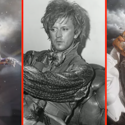




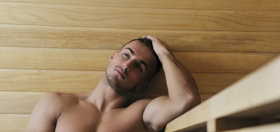



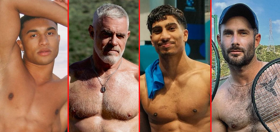
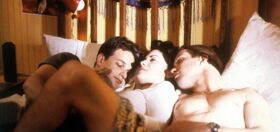




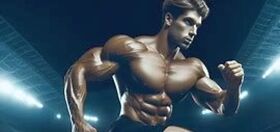

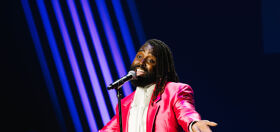
Essie
He is a “celebrity stylist” in Nashville?? Those “celebrities” down there all dress like the hillbillies they are. Have you actually seen any of them on the red carpet? I mean, were there no real Hollywood stylists available for interviews? (And you cannot make me believe Nicole Kidman was EVER styled by this man.)
Thad
Three words: Little Big Town.
Nashville is a very blue dot in a very red state. I love it.
Joshooeerr
Nicole Kidman lives in Nashville